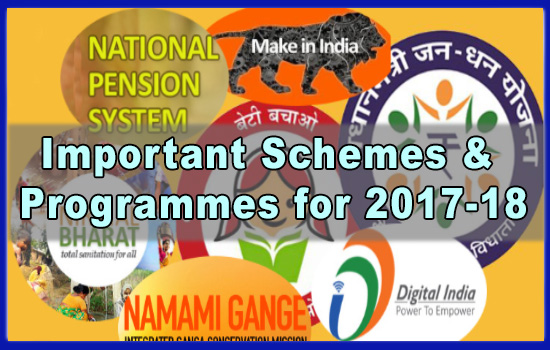
Big Bank Theory - New GST Rates
Before we discuss the rates under various slabs of GST, let us have a quick glance over What is GST?
GST stands for Goods and Service Tax. It was introduced as the Constitution (one hundred and first amendment) Act, 2016. Finance Minister Arun Jaitley is the chairman of the GST Council.
GST aims to integrate various central and state level taxes, that are applied individually into a single tax. This move is expected to bring about a significant reform in Indirect Tax system of the country by creating a common national market. The overall tax burden on goods would be reduced for the consumers. This reduction is estimated to be about 25-30% as per the government. The administration and enforcement of taxes is also expected to ease, owing to single level tax regime.
14th GST Council Meeting was held today (18th may 2017) at Srinagar, Jammu & Kashmir, to define rates of certain goods. The rates will be applicable at undermentioned levels-
Let us now have a look at various goods that have been classified under the above mentioned slabs.
Nil (No tax Slab) -
There will be no tax applicable on certain goods like, fresh milk, meat, eggs, Butter Milk, Curd, Natural Honey, Fresh vegetables, roots and tubers, fruits (other than those in frozen or preserved state), Coffee beans, All cereal goods (other than those put up in unit container and bearing a registered brand name), Flour, Soya beans, groundnuts, Cane jaggery, Puffed rice, bread, Prasad, Common Salt, Bindi, Sindur, Plastic bangles, Wood charcoal, Judicial, Non-judicial stamps, Newspaper, Handloom etc.
5% Slab -
This tax slab would involve articles like, frozen fish, fish fillets, Ultra high temperature milk, Milk cream, Cream yogurt, Whey, Ivory, Herb , bark, dry plant, frozen or preserved fruits and vegetables, Peel of citrus fruits and melons, Coffee, tea, natural gums, resins, Vegetable fats and oils, beet, sugar, cane sugar, cocoa beans, Mixes and doughs for the preparation of bread, Tobacco leaves, Unroasted iron pyrites, sulphur, All ores and concentrates, Kerosene, Sulphonated castor oil, fish oil, Handmade safety matches, Building bricks, Kerosene, Lifeboats etc.
12% Slab -
This includes items such as, Frozen meat, Butter and other fats, Cheese, Dry fruits, starches, Animal fats and oils, Sausages and similar products, of meat, meat offal or blood, Fruit and vegetable juices, Roasted chicory, Soya milk drinks, Beverages containing milk, Marble, Granite blocks, Bio-gas, Medicinal grade Hydrogen peroxide, Fertilizers, Fountain/ Ball pen ink, Tooth powder, Agarbatti, Candles, Photographic plates and films, Children’s picture/ drawing/ colouring books, Umbrellas, Sand lime bricks, Sewing Machines, Cell Phones etc.
18% Slab -
Items included in this tax slab are, Condensed Milk, Malt, Vegetable saps and extracts, Indian katha, Glycerol, Vegetable waxes, Refined sugar, Pasta, Cornflakes, Waffles, Pastries and Cakes, Jams, Jellies, Marmalades, Sauces, Soups, Ice cream, Food mixes, Diabetic foods, Petroleum jelly, Paraffin wax, Fluorine, Chlorine, Bromine, Iodine, Colouring matter, Printing ink, Essential Oils, Artificial waxes, Safety fuses, Insecticides, Wood tar, Kitchenware, Tableware, Safety Headgears (Helmets), Refractory bricks, Camera, Speakers and Monitors etc.
28% Slab -
Following are the products included in this tax slab - Chewing gum, Cocoa butter, Extracts, essences and concentrates of coffee, Non-alcoholic beverages, Aerated Water, Portland cement, Paints and Varnishes, Artist/ Student or signboard painter’s colours, Perfumes, Toothpaste, Fireworks, Sinks, Wash basins, Wall paper/ coverings, Lamps, Lighting fittings, Pianos, Revolvers, Washing machines, Vacuum cleaners, Motorcycles, Aircrafts for personal use, Yachts etc.
For complete list of articles assigned under various tax slabs, go through the link below, where you will find the official PDF released by the GST council.
GST council is yet to decide the rates of following products -
Biri wrapper leaves, Biscuits, Biris, Footwear, Natural or cultured pearls, precious or semi-precious stones, precious metals, metals clad with precious metal, and articles thereof, imitation jewellery, coin, Power driven Agricultural, horticultural, forestry, poultry keeping or bee-keeping machinery, Harvesting or threshing machinery, machines for cleaning, sorting or grading, machinery used in milling industry and parts.



















